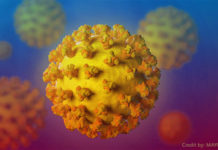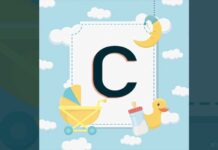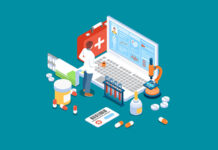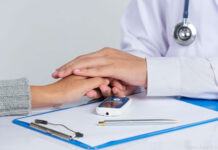Whenever we get a minor cut during an accident, it’s the blood clot that saves the day. The bleeding stops in a while due to the formation of a blood clot at the place of injury by platelets and proteins present in the plasma of the blood. The blood clot dissolves after the healing of the wound. Therefore, blood clots are heroic in this way. Then when the problem arises? The problem arises when the blood clot informed in the arteries or veins without an apparent injury or the blood clots do not dissolve naturally when they should. This is very dangerous and requires immediate diagnosis and treatment.

What are the types of Blood Clots?
The circulatory system comprises blood vessels called veins and arteries, transporting blood throughout the body. Blood clots can be arterial or venous. Arterial clots require immediate medical treatment as symptoms occur immediately, including severe pain, paralysis of various parts of the body leading to a heart attack or stroke. On the contrary, venous clots usually develop over time, but they are also life-threatening. The most common type of venous clot is deep vein thrombosis.
Am I at Risk of developing a Blood Clot?
Certain risk factors increase the chances of developing a blood clot. However, the risk factors of developing an arterial clot are different from those of developing a venous clot. The person at risk of developing one type of lump may not be at risk of developing the other one. Different risk factors or problems can cause abnormal and unwanted clotting; however, each factor may initiate the mechanism of clotting differently. There are molecules in our system that signal our body to let it know when, where, and how quickly to form a clot.
Genetics plays a significant role in how quickly our body responds to the signals. Certain risk factors, such as obesity, reduce blood flow in the veins, while others, such as age, can increase the body’s natural ability to form a clot. Certain medications can also affect the process of blood clots formation.
Obesity Pregnancy Immobility (including prolonged inactivity) Smoking Certain cancers Age (increased risk over age 60) A family history of blood clots Oral contraceptives Chronic inflammatory diseases Diabetes Trauma Certain surgeries High blood pressure High cholesterol Prior central line placement
Blood Clots in the leg or Arm It a commonplace for a blood clot to form in the lower leg. A blood clot in the leg or arm has various symptoms, including:
- Swelling and tenderness pain a warm sensation reddish discolouration The symptoms also vary in patients depending on the size of the blood clot. If the blood clot is large, the entire leg could become swollen with extensive pain. It’s uncommon to have blood clots in both legs or arms concurrently. The chances of having a blood clot increase if the symptoms are limited to one leg or one arm.
- A Blood Clot in the heart A blood clot in the heart results in a heart attack; although the heart is a less common organ for a blood clot, it can happen. A blood clot in the heart could cause the chest to hurt or feel heavy. Other potential symptoms are Light headedness and shortness of breath.
- A Blood Clot in the Abdomen Severe abdominal pain and swelling can be symptoms of a blood clot in the abdomen.
- A Blood Clot in the Brain, or Stroke A blood clot in the brain, also known as a stroke, could cause a sudden and severe headache, along with a few other symptoms, including difficulty speaking or seeing at a sudden.
- A blood Clot in the Lungs If a blood clot travels away from the site of formation and re-establishes itself somewhere in the lungs is called pulmonary embolism (PE). Signs and symptoms PE are:
- Sudden shortness of breath without any physical activity palpitations, or irregularly rapid heart rate chest pain breathing disorders blood in cough How Are Blood Clots Treated? blood clot Blood clots are treated in many different ways, and the decision is made while considering the location of the clot and the patient’s health. If the symptoms prevail and you feel that you may have a blood clot, consult a doctor immediately. There have been many research advances that give prevention and treatment of blood clots, including:
- Anticoagulants: medicine preventing clot formation Thrombolytics: medication that dissolves clots Thrombectomy: surgical removal of a clot Catheter-directed thrombolysis: a surgical procedure in which a long tube, called a catheter, is inserted and directed toward the blood clot site where it delivers clot-dissolving medication If a person is diagnosed with a venous clot, the doctor may refer him to a haematologist, a doctor who is specialized in treating blood diseases.
For some patients, participating in a clinical trial may provide a chance to access novel therapies. If diagnosed and want, you can talk with the doctor about whether joining a clinical trial is right for you.
Are Blood Clots Preventable?
Blood clots are one of the most preventable types of blood disorder and conditions. There are several ways to reduce the chances of developing a blood clot, such as controlling the risk factors where possible. If you think you may be at an elevated risk because of genes or lifestyle, talk with your doctor.
Diagnosing a blood clot by signs and symptoms alone is very difficult. Symptoms that come out of nowhere without any reason are especially about to concern. Call the local emergency services immediately if you experience any of the following:
Sudden shortness of breath chest pains or feeling of pressure difficulty in breathing, seeing, or speaking The doctor or other healthcare professional will be able to diagnose whether there’s a reason for concern and can send you for advanced tests to determine the exact problem and its root cause. In most cases, the first step is a non-invasive ultrasound. This test will show an image of the veins or arteries, which can help the doctor diagnose.
Source/Credit by: Free Articles from Amazines.com










































